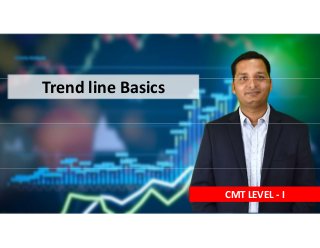Trendlines Basics
Everything you need to pass Level I of the CMT Program ,CMT Level I : An Introduction to Technical Analysis fully prepares you to demonstrate the basic competencies of an entry-level analyst, including a working knowledge of terminology and the ability to discuss key concepts and fundamental analytical tools. Covered topics address theory and history, markets, market indicators, construction, confirmation, cycles, selection and decision, system testing, and statistical analysis. The Level I exam emphasizes trend, chart, and pattern analysis. This cornerstone guidebook of the Chartered Market Technician(R) Program will provide every advantage to passing the Level I CMT Exam. CMT Level I An Introduction to Technical Analysis book pdf download, CMT Level I An Introduction to Technical Analysis book read online, CMT Level I An Introduction to Technical Analysis book epub , Amazon , audiobook , Online etc. CMT Level I An Introduction to Technical Analysis book download book online, CMT Level I An Introduction to Technical Analysis book pdf free download, download ebook PDF EPUB, book in english language, Download pdf kindle audiobook mp3 For Download Free E-Book Now visit us :- http://www.ptaindia.com/online-cmt-course/

Recomendados
Recomendados
Más contenido relacionado
Más de Professional Training Academy
Más de Professional Training Academy (20)
Último
Último (20)
Trendlines Basics
- 1. CMT LEVEL - I Trend line Basics
- 2. Learning Objectives Basics of Trend lines Types of Trend lines - Regression Trend line. - Accelerating Trend Lines - Decelerating Trend Lines - Internal Trend Lines - Speed Lines Types of Channels - Price Channel - Andrews Pitchfork - Gann Fan Lines CMT LEVEL - I
- 3. What is Trendline? •A single trendline can be applied to a chart to give a clearer picture of the trend. •Trendlines can be applied to the highs and the lows to create a channel. •The time period being analyzed and the exact points used to create a trend line vary from trader to trader.
- 4. Why we need Trendline? • The trendline is among the most important tools used by technical analysts. • A trendline helps technical analysts determine the current direction in market prices. technical analysts look for trends in price action. • Technical analysts believe the trend is your friend, and identifying this trend is the first step in the process of making a good trade.
- 5. How to Draw Trend line? • Always ascertain two successive Higher Bottom or Lower Top consider from Absolute Top or Bottom • To create a trend line, an analyst must have at least two points on a price chart. • Trend line Connect Successive Two Higher Bottom then it is known as Uptrend Line • Trend line Connect Successive Two Lower Top then it is known as Downtrend Line
- 6. How to Draw Trendline?
- 7. Limitations of a Trendline • All charting tools have to be readjusted as more price data comes in. • traders often choose different data points to connect. • Trend lines applied on smaller timeframes can be volume sensitive. • A trend line formed on low volume may easily be broken as volume picks up throughout a session.
- 8. What is Channel? • A price channel is a chart pattern that connects a stock’s price peaks and troughs over a period of time. • Price channels are a useful tool for stock analysis. • They require at least four points of contact (two each for the upper and lower lines). • Price channels can move either upwards, downwards or stay flat, but the two lines must be approximately parallel.
- 9. What is Channel? • If a stock is fluctuating between consistent highs and lows, a trader can use a channel to predict price peaks and troughs. • For example, a trader could buy a stock when the price touches the lower channel line and set a profit target at the upper channel line. • It is Consider Strong Form of Price Movement which stay in trend for long time.
- 10. What is Channel?
